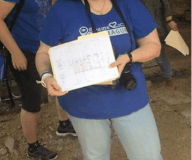Written by volunteers Dreana and Brittany:

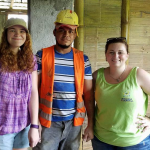

Hello! I’m Dreana, aka Bones (a nickname given to me by my D2A family), and this is my third year fundraising for Dreams to Acts. Taking on the goal of fundraising $5,000 can seem overwhelming and downright terrifying. I’m hoping that this post can give you some ideas about how to approach fundraising so that it’s less daunting.
Hiya! Im Britt or Saucy :). I have been involved with Random Acts and volunteering with the Dreams to Acts project since 2014. Just like Dreana, this is my third year fundraising and I want to share some of the tips and tricks I’ve used over the past few years to make this campaign seem less intimidating. Reaching $5,000 is a little scary and a lot intimidating but with solid support from your fellow delegates and a belief in the project anyone can be successful!
—–
One interactive way to reach your fundraising goal is through specialty events. If you have a family friendly community and a local vendor to work with this may be a good option.

My most successful event was as simple as a bowling day. I rented out four lanes for the event, was given two tables and access to the bowling alley PA system. Throughout this two hour event we raffled off gift baskets, gift cards to local businesses and restaurants, had 50/50 raffles and offered a door prize donated by the local Italian restaurant. We offered baked goods, creatively decorated to look like a Nicaraguan flag, gave out door prizes like Dreams to Acts bracelets and just walked around and talked about the project with anyone who would listen. I invited friends and family and spread the word using free marketing websites and drowning the local businesses in flyers. But even if you don’t have a lot of people you know attending the event, it can still be a success. On average only about 10% of the people I invited actually showed up. But because of my access to the PA system in the bowling alley and some awesome swag up for raffle, the event was a success raising over $1,500.

——
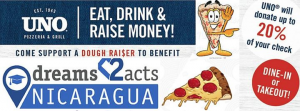
My most successful event was a fundraiser that I held at a local restaurant. The restaurant donated a percentage of their sales from that night if the person handed them the coupon/flyer we had made up for the event. This was, admittedly, a labor-intensive event. I contacted local news stations, and secured a small interview promoting the event, contacted local businesses to receive donations that we put together into raffle baskets, left adverts in break rooms and lunchrooms of local businesses, etc. We ended up setting up a table at the entrance of the restaurant, where we had a raffle baskets as well as posters with information about Dreams to Acts, and I sat at the table talking to people and answering their questions for nearly eight hours. I also handed out information so that those who attended the event could follow my progress on Facebook, make future donations on Crowdrise, and stay up to date on how construction was going. In the end, this event raised well over $500.
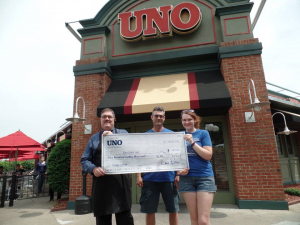
—–
Not every event needs to be this elaborate, though! Throughout the process of fundraising, I hold several smaller scale events. Since I’m in grad school and working part time, many of these fundraisers are online events that I can participate in throughout the day/night by checking in on my phone. Are your friends or family into specific products like LuLaRoe, Perfectly Posh, Jamberry, Scentsy, etc? Find a consultant and ask about a fundraiser! My first ever fundraising event in March of 2015 was an online Jamberry fundraiser. Two years later, now with my mom as a consultant, a group of us who had fundraised for D2A: 2015 and/or 2016 hosted a joint Jamberry fundraiser. Don’t be afraid to reach out to consultants- this benefits them, too, because it brings in new customers and helps them to reach sales goals. This way, your donors also get something nice for themselves while helping you raise money, too. In some cases, they were already going to be doing the shopping, so they won’t even see it as you “asking for money”. Creative fundraising is all about finding ways to make donating less scary for the donor, whether that’s finding a way to receive donations from a purchase that they were already going to make, by giving them something in return for their donation, or by helping them truly connect with the project.
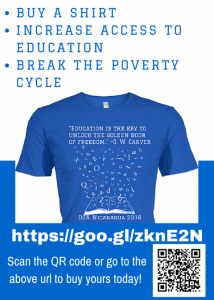
Just like Dreana, I to do a lot of smaller fundraisers throughout the campaigns. This year I have worked with her and other delegates on an online jamberry fundraiser, we did a combined T-shirt campaign last year and we have worked closely together on multiple different projects. We even created a challenge similar to the ALS ice Bucket challenge and raised over $500.
At least once or twice a month I hold mini two hour fundraisers at my local grocery store. It is as easy as setting up a table out front of the store with pictures, Random Acts flyers and just talking about the project. This is a great way to raise awareness for the project in the community, and to meet new potential donors and volunteers. Generally the people who walk by the table are too busy or seem like they just don’t care, but if you know the project and are able to show your passion and commitment to it you will inspire them to be passionate about the project as well.
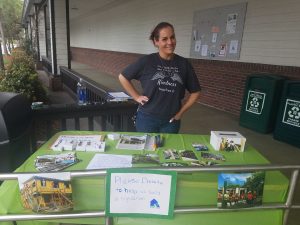
——–
So since there are so many people and organizations competing for attention it is really important to make your campaign unique. One way to do with is to offer fun or one of a kind incentives for donors. You could write them a poem, send them postcards or make them something special to remind them of the project they helped. One of the things I currently do and is the backbone of my 2017 campaign is, necklaces for Nicaragua. I collected earth, rock and discarded building materials from the Free High School on the first day of construction and each time since I have been back in Nicaragua. I use these materials to create custom jewellery and charms for my donors. Each donor receives a little piece of the school for them to carry with them. This allows them something tangible and meaningful from their donation and helps them to feel like they are really involved in the future of the school.

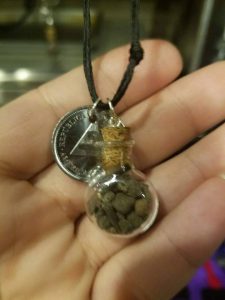
This will be my third year fundraising for Dreams to Acts, so I like to delude myself into thinking that I’ve learned a few things along the way. First, it’s important to realize that this is probably not going to be a one time event. Sure, in theory, you could hold one HUGE fundraiser that will reach $5,000 or you could have a big enough social circle that asking all of your friends and family to chip in brings you up to $5,000 with or without events. It’s more likely, however, that you’ll have to ask people you know for donations multiple times (with breaks in between), reach out to strangers, and hold multiple fundraising events. Instead of trying to plan One Big Thing, focus on smaller scale projects that will generate interest.

Try to put yourself in the place of your friends and family. If someone you knew was fundraising, what sort of activities, events, or rewards would make you more likely to contribute? I’ve had more success when I fundraise in ways that give the donors something in return for their donations. Donor rewards really do make a difference. For example, I brought back small souvenirs and cards from Nicaragua and I send these out to people who donate certain amounts so that they can have a physical reminder of Nicaragua. I know others have had success with handmade gifts for their donors. During my first year of fundraising, I would knit squares for Knit-A-Square for every $20 donated. If donors opted in to this, they could choose the color and pattern and I would knit the square and donate it in their honor. This gave them the chance to double their positive impact. Small things like this that motivate people to donate really do make a difference.
—–
The reality of fundraising
During what ended up being my most successful fundraising event, a man walked up to me, looked me in the eyes, and calmly asked, “Why should I care?” I spent nearly ten minutes explaining why Dreams to Acts is important, including personal stories from my first trip to Nicaragua, but I could see that I was not making much progress with him. At the end of our conversation, he said, “Well, it’s not my problem, is it?”, handed me a one dollar bill, and walked away. This is probably the hardest part of fundraising for me. Being told no when I ask for donations is tough, of course, but interacting with people who simply do not care is even harder. As fundraisers, part of our “job” is to convince people that our cause is worthy of their money. It’s important to be able to explain why the cause matters not only to the people being helped, but also why it should matter to the potential donor. It’s important to make a connection between this school in San Juan del Sur and the person you’re speaking with. This isn’t a foolproof method, though. Sometimes, no matter how hard you try, the person will not care.
As cliché as it sounds, fundraising $5,000 is a marathon, not a sprint. There will be days and weeks when everything goes right. These are the Good Days. Days when you receive multiple emails from Crowdrise, when an event goes even better than you had anticipated, when you reach a new milestone and feel invincible, days when you talk to a new person who seems to genuinely care about the project. You should definitely cherish these days when they happen, but keep in mind that not every day will be like this. There will also be Bad Days. Days when someone is rude to you, days or even weeks on end with no new donations no matter how hard you try to reach out to others, events that you pour your heart into planning and make little or even no donations from.
I don’t say this to discourage you from fundraising. Please do take the leap and try- I promise that it will be rewarding. I bring up the bad days because not many people talk about them, and I want you to know that this is not a reflection of your fundraising ability. There will be slow times. Not just plateaus, but lows. And these are the times when it’s important to take a step back.
This campaign is a big mountain to climb so don’t feel stressed or overwhelmed. As Random Acts founder stated, donor fatigue is real and something to be aware of, but so is fundraiser fatigue. I have fundraised for Dreams to Acts for three years running and each campaign I have found myself needing to step back, take a break and unplug from the project for a while.
And that’s ok.
You don’t have to hit 5k in a day, a week a month. You don’t have to have a successful event every week. Don’t feel bad if your campaign is moving slowly. No matter how much money or attention you raise for a project in a given day, week, or month, you have already made the project a success by caring at all.
Breathe. Don’t look at how far away you are from $5,000. Look at how much you’ve raised and focus on how much good that amount will do. You have already succeeded. You’ve already made a difference!
END


